The First Pure Jet-Powered Design in the Company's
History… Makes History
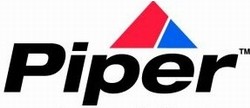 As previously alerted
through our Aero-Twitter system, Piper Aircraft has flown the
PiperJet. The new aircraft, the first pure, jet-powered, turbofan
design in the company's 71-year history, made its first flight at
11:11 AM today from Piper Headquarters in Vero Beach, Fla.
As previously alerted
through our Aero-Twitter system, Piper Aircraft has flown the
PiperJet. The new aircraft, the first pure, jet-powered, turbofan
design in the company's 71-year history, made its first flight at
11:11 AM today from Piper Headquarters in Vero Beach, Fla.
"Today marks the beginning of a new era for Piper Aircraft as
the company literally takes flight into a whole new realm of
performance, luxury and capability," said Piper President & CEO
James K. Bass. "With this major milestone in the PiperJet's
development, we are witnessing our future - one that is built on a
strong and lasting heritage and reputation for innovation and
excellence."
The PiperJet flew for one hour, reaching a maximum altitude of
10,000 feet and a speed of 160 KTAS as per the flight test plan.
Piper Test Pilots Dave Schwartz and Buddy Sessoms were at the
controls.
The PiperJet incorporates many new design features, and the
first flight was focused on taking an early look at basic handling
characteristics, the effects on pitch trim with power changes, and
basic operation of the engine's FADEC control system.
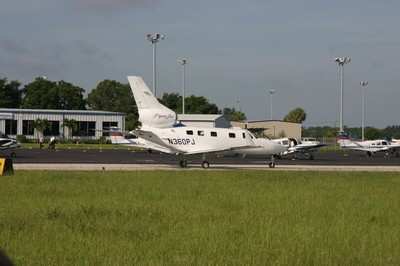
"The PiperJet exhibited excellent control response around all
three axes," said Schwartz. "The ergonomics and the basic operation
of the side stick control were excellent, with well-balanced and
harmonized control inputs required for the air speeds that we
tested. Moreover, the expected level of pitch trim change with
power applications was minimal and easy to overcome."
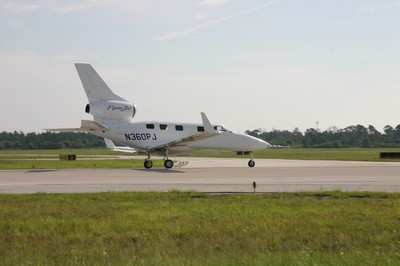
The PiperJet is powered by a single Williams FJ44-3AP engine
rated at 3,000 pounds of thrust. In the PiperJet application, the
engine is de-rated to approximately 2,400 pounds of thrust.
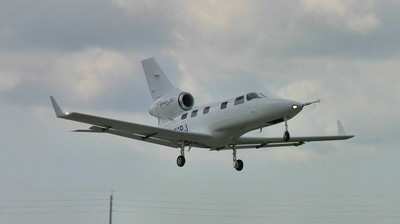
"The FADEC control on the Williams engine greatly reduces pilot
workload, allowing greater focus on controlling and navigating the
PiperJet," said Schwartz. "Pushing the single power level full
forward for takeoff results in a smooth but rapid buildup of thrust
and acceleration."

Another confirmation from the first flight was the lack of cabin
noise inside the PiperJet - one of the many positive attributes
resulting from designing the engine installation well aft in the
vertical tail, behind the pressure bulkhead. "The resulting lack of
cabin noise was even better than expected," said Test Pilot
Sessoms. "Even without sound insulation or an interior, the cabin
was exceptionally quiet. It will be even quieter in the completed
airplane. In all, our customers should be very pleased with the
quiet cabin and lack of engine vibration."
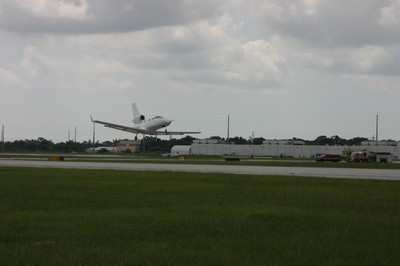
With completion of first flight, the PiperJet has begun a 50
hour initial flight test program to expand the envelope and further
investigate the aerodynamic configuration and basic flight
performance. Piper test pilots expect to retract the landing gear
on the PiperJet's next flight, after which they will make several
more flights to expand the high-speed envelope, eventually reaching
360 KTAS. Envelope expansion will also include higher operating
altitudes, up to a maximum of 35,000 feet.
Piper plans a public unveiling of the PiperJet for existing and
prospective customers and the news and aviation media in late
August or early September at the Piper factory in Vero Beach, Fla.,
during which Piper test pilots will demonstrate the PiperJet's full
flight capabilities. Details of this event will be forthcoming.
The six passenger PiperJet - with an option for either a seventh
seat or enclosable lavatory - offers a mission-capable profile and
sensuous luxury that sets the standard in its class, with a range
of 1,300 nautical miles* and a full-fuel payload of 800 lbs.*
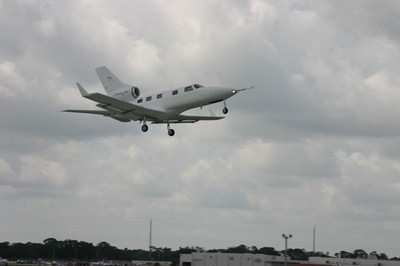
Built using state-of-the-art design and manufacturing processes,
the PiperJet will feature the latest in integrated glass avionics,
a luxurious interior and advanced manufacturing techniques
pioneered by Piper. Pricing is quoted as $2.199M (in 2006 USD
with a CPI-W escalator).
"The PiperJet will be certified in the Normal Category under FAA
Part 23 and applicable foreign certification standards," said John
Becker, Piper's Vice President of Engineering. "It's designed to be
flown by a single pilot and will be RVSM Certified. Moreover, its
innovative design includes ample baggage space and class-setting
useful load. The PiperJet will be certified to a maximum operating
altitude of 35,000 feet, well above the weather while combining
performance with the latest safety technologies and features."
Deliveries are anticipated to begin in 2011. Focusing on the
latest in ergonomic automobile design, the PiperJet will provide
passengers with an interior that synthesizes a sophisticated color
palette with a spacious, energetic design. A wealth of features,
from rich leather seats, deep zebra wood details and rich fabrics
and trim to perfectly placed storage, cup holders and docking
stations for personal electronics, the PiperJet is equally
attentive to pilot and passenger comfort and needs, reduced
workload and ease of operation.
Piper has selected Garmin International, Inc. to provide the
avionics suite for the PiperJet. From Flight Into Known Icing
(FIKI) to FADEC, Piper states that 'PiperJet's focus is on
optimal operational excellence, user-friendliness, and safety.'The
PiperJet also incorporates 'major innovations that speak directly
to performance and value for money,' including a high-speed,
natural laminar flow (NLF) wing that enhances fuel economy and
performance and advanced metal bonding for improved strength and
manufacturing integrity.
 NTSB Final Report: Cozy Cub
NTSB Final Report: Cozy Cub ANN FAQ: Contributing To Aero-TV
ANN FAQ: Contributing To Aero-TV Classic Aero-TV: Seated On The Edge Of Forever -- A PPC's Bird's Eye View
Classic Aero-TV: Seated On The Edge Of Forever -- A PPC's Bird's Eye View ANN's Daily Aero-Linx (04.29.25)
ANN's Daily Aero-Linx (04.29.25) ANN's Daily Aero-Term (04.29.25): Execute Missed Approach
ANN's Daily Aero-Term (04.29.25): Execute Missed Approach









